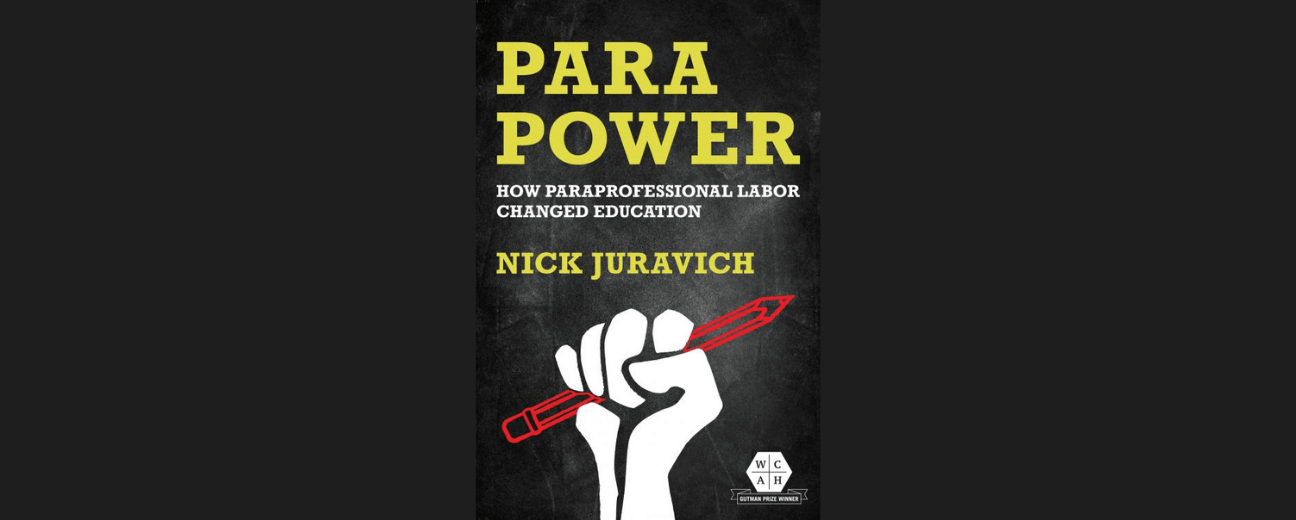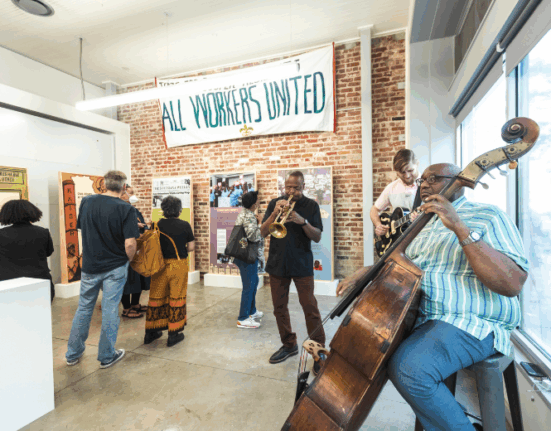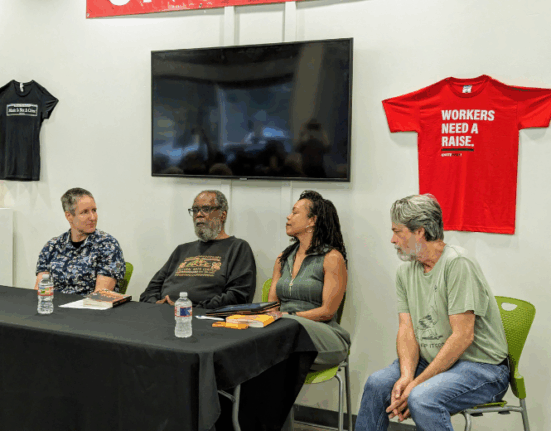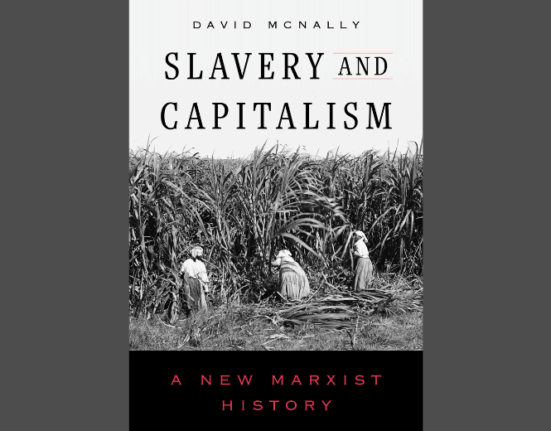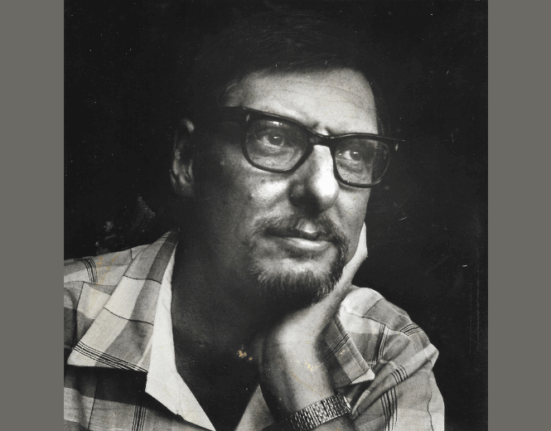In Para Power: How Paraprofessional Labor Changed Education, Nick Juravich shows that the job category we know today as “paraprofessionals” in education was initially conceived as a cheaper way to distribute care labor within urban schools managing the baby boom. During Lyndon Johnson’s War on Poverty, school districts repurposed the job as a way to bring poorer women, and especially Black and Latina women, into the schools their children attended in response to the organizing of parents and civil rights organizers. Teachers and their unions initially did not want paras in schools, fearing that they would be a threat to their jobs. Yet as the programs progressed, teachers who worked with paras pushed their unions to welcome paras, and paras themselves organized and joined teacher unions. This lasted throughout the War on Poverty and until the federal government re-drew and re-directed federal grants, which initially came through the 1965 Elementary and Secondary Education Act. However, in 1977, New York City Mayor Ed Koch (New York City is the focus of the book) did not want to give the paras – women of color – contracts that mirrored those of more “professional” white teachers and the coalition built by the War on Poverty fizzled.
Juravich’s book offers insights into the successes and failures of public sector unionism. That is, it shows that public care labor is only valued and well remunerated when the people who hold the jobs are critical to the political coalition that runs the city. The rise and fall of good jobs for women of color in the care sector follows the political coalitions that assign value to work.
As part of our ongoing series of interviews with authors of books on labor and working-class history, Janine Giordano Drake reached out to Nick Juravich to talk about his book.
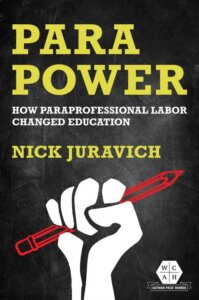
Your book explores the history of the job category called “paraprofessionals.” I had never before heard of this term, but I do know the term “teacher’s aide.” Who are paraprofessionals, and what was their role in the War on Poverty?
It’s a great question! One of the things I’ve struggled with throughout this project is terminology, because these workers are known by many names, both in the past and in the present. Each term has its own origin and history, which in turn sheds light on the origins and evolution of these jobs overall.
The book begins with the hiring of workers defined as “teacher aides” in the immediate postwar era. These positions were designed by administrators and Ford Foundation researchers to bring more adults into overcrowded classrooms quickly and cheaply, and their labor was defined as non-teaching and non-professional, even though it was quickly apparent to both the aides and the teachers they worked with that classroom labor is not so easily divided. The term makes both the role and hierarchy clear: the “aide” was there to assist the teacher as a subordinate (though many principals treated aides as utility staff to shift around at their own whims, in contrast to classroom teachers who tended to develop more collaborative relationships with aides).
In New York City in the early 1960s, scholars and activists re-imagined these roles with the term “parent aide.” The shift in language was deliberate, emphasizing that these aides would be parents of schoolchildren and would serve their fellow parents by bringing their concerns into schools and reporting back on what was happening in classrooms. As these were years in which Black and Puerto Rican New Yorkers were waging campaigns against systemic segregation, under-resourcing, and miseducation of their children, the idea of “parent aides” working in schools was both radical and, for many administrators who tried to sideline them, unsettling.
The term “paraprofessional” was introduced in the mid-1960s by a scholar named Frank Riessman, who worked in the world of civil-rights-adjacent antipoverty work in New York City. Building on the commitments to both job training and “maximum feasible participation” for poor and working-class people in the War on Poverty, Riessman imagined “aide” work as simultaneously improving classroom instruction (as the “teacher aide” creators wanted), better connecting school and community (as activists hoped), and serving as the bottom rung of a “career ladder” that would train new teachers. The “paraprofessional” was thus both a teacher aide and a parent aide, as well as a future teacher (at least potentially), a feature of this newly-defined role that would become a source of debate and organizing down the line.
While you’re at it, could you define “activist mothering?”
Absolutely! LaborOnline readers may know this term from the work of Annelise Orleck, who redefined our understanding of the War on Poverty by illuminating the ways in which Black women and mothers seized upon the idea of (and resources available from) the “War on Poverty” to put their own visions and programs into practice. These organizers built on longstanding traditions and delivered significant gains for themselves and their communities in the process. In developing her historical analysis, Orleck engaged earlier generations of Black feminist thought, including the work of Patricia Hill Collins and bell hooks, who define these traditions as “community othermothering,” a practice of mutual aid and collective care.
This framework remains so important because it lays bare the bankruptcy of, and harm done by, one of the elite ideas of the War on Poverty era: the notion of a “culture of poverty” produced by “matriarchal” families, particularly Black and Puerto Rican families. This framework defined Black mothers as the problem, while scholars of “activist mothering” have demonstrated convincingly that, in fact, they held the keys to the solution. Where and when they were able to organize for power and resources, they made tremendous, life-altering interventions in their communities and beyond. In the book, I put the first generation of paraprofessional educators in this camp, and do my best to show how their educational and organizing labor improved educational experiences and outcomes for their students and communities.
I should note that historians of education have – rightly! – cultivated critiques of the maternalist assumptions baked into educational labor. Colleagues from that world have sometimes pushed back against this framework, arguing that it naturalizes and essentializes paras’ labor and activism as some kind of inherent product of their race and gender. This is something Black feminist scholars have always been keenly aware of – in Black Feminist Thought, Collins defines community othermothering as a practice, not an inherent quality, and she critiques the “supermother” trope as applied to Black women. I try my best to do the same in Para Power, and to show how paras consciously developed their activist mothering as a practice, as well as exploring moments when they responded to maternalist essentialism articulated by administrators (often as a union-busting tactic) and even, occasionally, by their allies.
The solidarity paras and teachers built was an on-the-ground, in-the-classroom, working-side-by-side process.
You show us how these paraprofessionals were care workers and it was initially unclear to both teachers and school administrators that they ought to be in the New York City teachers’ union. In 1969, this changed. Why did Albert Shanker and the rank and file teachers of New York City decide to embrace the paras as part of their union? How did this expansion beyond the traditional trade union model reshape public sector union organizing?
Shanker very publicly embraced paraprofessional organizing after the 1968 teachers strikes in New York City, in part to respond to critiques of those strikes as a racist campaign, and he is still widely credited in official UFT and AFT histories as the visionary leader behind the first wave of paraprofessional organizing. As I show in the book, however, he was not the first UFT or AFT leader to see the need for making these jobs permanent, unionized, living-wage positions. That honor belongs to Black socialist Richard Parrish, who worked with the organization Harlem Youth Opportunities Unlimited, Incorporated in the early 1960s to hire and train “parent aides” to work alongside teachers in summer reading programs in Harlem. As an AFT vice-president, Parrish expressed his support for the growth of these positions in the mid-1960s, when many of the union’s leaders feared they would be used as cheap replacements for teachers or strikebreakers.
Another AFT VP who argued for organizing paras early on was Rose Claffey, president of the Massachusetts Federation of Teachers (now AFT-MA). Her argument was, to paraphrase: talk to the teachers who work with these new educators, and they’ll tell you what a difference they make. This goes to another key point I try to emphasize in the book: the solidarity paras and teachers built was an on-the-ground, in-the-classroom, working-side-by-side process, one that the first UFT organizers of paras documented in detail in the 1967-1968 school year (the year before the fall 1968 teacher strikes, or spring 1969 para organizing campaign). In a survey released in May of 1968, 200 teachers working with paras gave the UFT an overwhelmingly positive evaluation of the experience, and said they’d support bringing these workers into their union (paras, also surveyed, said they wanted to join).
So while it’s true that Shanker embraced para organizing after 1968 – and, we should note, directed significant union resources toward this important effort – the story of how he and the union he led came around to this perspective is both a story of progressive pressure from within the union and on-the-ground solidarity built by the first generation of paras and teachers.
As for what bringing paras into teachers’ unions means, in some ways it’s still an open question. For Shanker and AFT president David Selden, part of the way they framed their organizing and sold their vision to hesitant teachers – whose own organizing had emphasized their middle-class professionalism – was by leaning on the idea that para-professionals should be understood as potential future teachers. This is, at heart, a very old-fashioned craft-union idea, which defines paras as apprentices and preserves a professional hierarchy in school and union. For other organizers, then and now, especially those on the left, there’s another option available, that of industrial unionism in education: building wall-to-wall unions that fight for all the people who work in a school building. This orientation really matters when it comes to making choices about who, and what, to prioritize in contract negotiations!
You show that paraprofessionals in the NYC schools served as a vanguard of public sector organizing for welfare everywhere. As you put it, they offered “a vision of collective advancement for an emerging post-industrial working class” (85). What do you think they accomplished on behalf of all public sector workers in the 1960s and early 1970s?
Another great question (and a reminder that we all need to be ready to answer for the big claims we make in our books!). This links back to your earlier question about the War on Poverty, because while there’s a worthy critique among labor historians of the top-down focus on training (and not job creation), the War on Poverty did, in fact, create a lot of jobs, and people fought fiercely over whether these jobs would go to middle-class professionals in fields like social work or to community members. Even after working-class and poor people did secure a share of this new employment, questions lingered: would these jobs be permanent? Would they pay living wages? Would they deliver on the policy promises envisioned by people like Frank Riessman? In many ways, they didn’t. Claire Duning has written excellent critiques of the New Careers model and the rise of the heavily-stratified nonprofit-industrial complex.
However, the organizing efforts of paras did secure these jobs in public education, and (for a time), a rising standard of living and new opportunities for advancement for paras. In cities with emergent pattern bargaining in the public sector, the contracts won by AFT locals set a standard for pay and training that workers classed as “para-professional” in other fields (social work, health) could demand for themselves. These wins didn’t last, for reasons we’ll get to further on, but for the better part of a decade, they showed what a new kind of public sector could look like.
For other organizers, then and now, especially those on the left, there’s another option available, that of industrial unionism in education: building wall-to-wall unions that fight for all the people who work in a school building.
To drill down on their impact, you show how the paras represented both the communities and the schools, and how this was a challenge sometimes for the union and for the communities. Yet by organizing this space workers built a coalition that kept schools rooted in their communities.
Absolutely. As I say in the book, there was always tension at the nexus of school and community, and particularly after 1968 in New York City. For a time, that tension was productive: it meant that paras could amass a diverse coalition to support their demands, because both the union and community organizations supported them, even if they didn’t agree on much else. It also presented real challenges, however, because different kinds of attacks on unions and community organizers in the 1970s pulled this coalition apart, leaving paras with much less power behind them.
Let’s talk about what your book teaches us about the War on Poverty. What did this federal funding do for both the paraprofessionals who took up these jobs and the communities that they represented? How did paraprofessionals help rebuild the coalitions that the Democratic Party represented in New York City?
To restate what I said earlier, paras’ organizing both realized a goal of War on Poverty programs in the 1960s and 1970s and preserved positions created by War on Poverty legislation long after the “war” itself had been shut down. While paras’ job descriptions rarely contain the exhortation to “maximum feasible participation” or anything like it these days, that potential, as well as that legacy, remains in both the work paras’ do and the community connections they maintain.
With respect to the Democratic Party and its coalitions, the story is more depressing. Years ago, someone summarized to me on a panel, saying “it sounds like they won a place in the liberal coalition just before it collapsed.” I think that’s more or less right; in fact, I start the final chapter with a description of how one para became a Democratic party leader in the Bronx just before Ed Koch was elected, and basically restructured paras out of that coalition, along with the social movements from which they came.
The idea that economic inequality and poverty could be addressed through training and education for individuals – rather than through more direct mechanisms like the redistribution of wealth or federal job creation – was one of the most debated, and derided, features of the War on Poverty. Paras’ organizing in this era included demands for career pathways and access to college programs, which allowed some of them to become teachers. Can you say more about these programs and their impact?
This is a huge issue, one that’s still very relevant today for paras and their unions. As I said earlier, that idea of on-the-job career training was added to the teacher aide / parent aide job description at the moment these jobs became incorporated into wider War on Poverty programs. That idea of career training was also very important to early organizing efforts, in two ways. First, the opportunity to become teachers had been promised to paras but not delivered by administrators, and AFT locals – particularly the UFT in New York – promised to deliver functional career training for all paras in contracts. As I noted earlier, this idea of paras as teachers-in-training was also very important for convincing some teachers and teacher unionists that bringing paras into their unions would not undermine teacher professionalism by essentially defining paras as apprentices along craft union lines.
In the later chapters of the book, I discuss both the impact of this training and its limits. In the 1970s, these free, stipended training programs helped thousands of working-class women of color, many of whom had been denied opportunities for higher education earlier in their lives, to become teachers, as well as to earn degrees that they could use in any number of other professions. At the same time, while huge numbers of paras participated in these programs – around 4,000 a semester in New York City, out of a 10,000-strong bargaining unit – only a very small percentage of paras actually became teachers (about 2,000 in New York City by the early 1980s, over a decade into the UFT’s “career ladder” program). It was a very long process: six years of after-school and summer classes for those paras who had started work with just a high school diploma.
These programs faced steep cuts during the depressions and rollbacks of the late 1970s. As Clarence Taylor – the great historian of education at CUNY who started his teaching career as a para in Brooklyn in 1976 – told me, even as these ladders became steeper and narrower, both the school system and the union used the career ladder as a cudgel, a way to tell paras demanding better wages or a voice in their work “if you want more money or respect, become a teacher.”
To jump ahead, amid the recent wave of paraprofessional organizing, the idea of para-to-teacher pathways has figured much less prominently. While the fundamental idea remains valuable – and an important rebuke to the idea that new teacher recruits need to come from elite colleges or alternative pathways – paras today are fighting for living wages and respect that recognizes them for what they already are: fully professional educators, deserving of living wages and respect in the jobs they do right now.
Paras today are fighting for living wages and respect that recognizes them for what they already are: fully professional educators, deserving of living wages and respect in the jobs they do right now.
Finally, your book offers some deep insights on political coalitions are built and how they fall apart. By the late 1970s, New York City was in fiscal crisis and Ed Koch did not think that paraprofessionals were a central part of the coalition that put his coalition. Part of this crisis was a sharp decline in federal funding from the Elementary and Secondary Education Act. But, what happened in New York City such that the coalitions built by the War on Poverty began to fracture? What does your research teach us about why paraprofessionals, who had been so important to the War on Poverty, became so much less important to the late 1970s and 1980s political machines in New York?
Koch went out of his way to single out paras and reject their contract demands when he started negotiating with the UFT in his first term as mayor. Koch, as his biographers have shown, built a new base as a congressman from Greenwich Village in the 1960s, and was much less reliant on either the old party machine or the unions that had supported it. The diminished power of unions mattered in Koch’s approach to paras, but Koch’s hostility to the social movements that had animated Black and Puerto Rican communities in the 1960s and 1970s mattered even more. Koch’s campaign, and first term, of reaction was designed to appeal to white, middle-class New Yorkers – including teachers – in part by demonizing poor and working-class Black and Puerto Rican New Yorkers. Koch regularly deployed racist, sexist language to describe working-class people of color and the workers from those communities who served them as public employees.
There are lots of good questions to ask about both the internal and external factors that led to the diminished place of both labor and the freedom struggles of Black and Latinx New Yorkers, but the overall result was that paras, and the ideas of education and the public sector they had promoted and practiced, found themselves marginalized in school and city policy by 1980. That said, they continued to work in public schools, a legacy of their organization and unionization that contrasts sharply with the wholesale disappearance of other War on Poverty programs. While the terrain on which they worked and organized was far more adverse, they continued to build links between schools and the communities they serve, and in doing so, laid and maintained groundwork for some of the successful strikes and contract campaigns we’re seeing today.
Authors
-
Janine Giordano Drake is Clinical Associate Professor of History at Indiana University, where she specializes in the history of labor, religion, and social movements. Her first book, The Gospel of Church: How Mainline Protestants Vilified Christian Socialism and Fractured the Labor Movement (2023) told the story of the Social Gospel movement from the bottom up. Her current work explores how the labor movement debated fair taxes for public education and welfare from the 1780s to the 1960s.
-

Nick Juravich is an Associate Professor of History and Labor Studies and the Associate Director of the Labor Resource Center at UMass Boston. He is the author of Para Power: How Paraprofessional Labor Changed Education (Illinois Press, 2024) and the co-editor, with Steve Striffler, of The Pandemic and the Working Class: How U.S. Labor Navigated COVID-19 (Illinois Press, 2025). He is a member of the Faculty Staff Union, a local of the Massachusetts Teachers Association.

